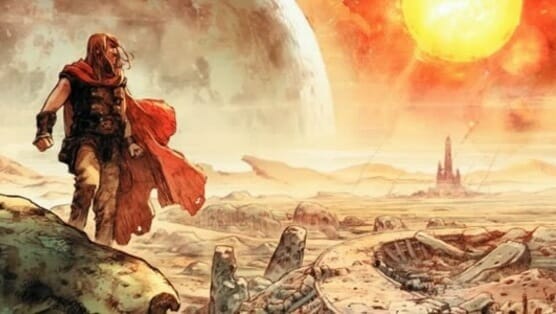Noah by Darren Aronofsky and Ari Handel

Writers: Darren Aronofsky and Ari Handel
Artist: Niko Henrichon
Publisher: Image
Release Date: March 19, 2014
From the relentless MTV-style bombast of Pi and Requiem for a Dream to the heady, cosmic love of The Fountain to the cinéma vérité grit of The Wrestler, filmmaker Darren Aronofsky has never been one to self-edit his boundless ambitions. He’s the sort of filmmaker who goes for the jugular each and every time. While the results can sometimes be mixed, the final product almost always leaves an indelible impression in the viewer’s mind.
The director’s upcoming project, a feature film based on the biblical story of Noah and his ark, presents an intriguing challenge for Aronofsky’s auteur sensibilities. Here, he must not only retell one of the oldest, most celebrated stories of all time, but he must also incorporate his unique vision so it doesn’t fall victim to the stodgy presentation that historically plagues adaptations of this ilk. Naturally, it’s these tweaks and expansions that have caused no shortage of pushback from religious communities.
In preparation for the controversial film’s release, we’re afforded an angle of Aronofsky’s unorthodox interpretation via a graphic novel adaptation. Released by Image Comics, Noah presents a lush translation of Genesis 5:32-10:1 that melds the realism of The Wrestler with the surreal imagery of The Fountain. As the novel is adapted from an older screenplay draft by Aronofsky and co-writer Ari Handel, it remains to be seen how closely this version will resemble the final cinematic product. Regardless, Noah stands as a fascinating interpretation of a classic narrative.
The book begins with a brief retelling of the Adam and Eve/Original Sin portion of Genesis via abstract images (a more detailed version comes later in the book). We then settle upon Noah as he wanders the barren wilderness with his family, which includes wife Naameh and three sons Shem, Ham and Japheth. The clan lives apart from a society that has, for all intents and purposes, gone to the dogs. Violent armies, led by the ruthless Tubal-cain, run rampant, viciously butchering animals for little more than sport and attaining parts for jewelry. Bemoaning the evils of man, Noah is soon greeted by visions of an incoming flood that will wipe away all mankind. In preparation, he begins building an ark to carry his family to safety. Along the way, they encounter a brutalized girl named Ila whom they incorporate into the family. As the years go by and the flood grows imminent, Noah faces challenges not only from Tubal-cain, but also from internal discord within his own family.
From the opening panels, artist Niko Henrichon submerges the story in washes of kinetic orange and icy blue. Besides co-creating the graphic novel Pride of Baghdad with Saga’s Brian K. Vaughan, Henrichon has made his name drawing comic book covers for both Marvel and DC. Though his skills with a pen are indisputable, the artist’s illustrations are not without missteps. On the whole, the art is wonderfully detailed, especially when the story calls for the nightmarish images within Noah’s apocalyptic visions. Of particular note is a full-page spread that finds Noah completely submerged in water, surrounded by decaying corpses. At times, however, the characters’ facial expressions appear simplistic; Naameh suffers from this more than the other members of her family. This shortcoming is particularly disorientating when placed next to panels where facial details are so meticulous that you can count whiskers and wrinkles. Likewise, Henrichon renders Noah’s grandfather, Methuselah, as a withered, near lizard-like creature resembling the kind of grotesque character you’d find in an pulpy Frank Miller/300-type adventure. Granted, it’s impossible to visualize what a nearly-900-year-old person could realistically look like, but there’s old and then there’s freakin’ scary.
One of the graphic novel’s biggest additions to the story (although Aronofksy and Handel include a single line from Genesis to somewhat justify this) incorporates of a group of four-armed, troll-like giants called the Watchers. In a twist on the classic Lucifer/Prometheus origin stories, the Watchers are presented as former angels who were cast down to Earth when they took pity upon man and woman after their expulsion from Eden. They then provided mankind with all the knowledge of technology, magic and science that they’d need to survive. Of course, Man responded by using this knowledge to kill one other and drain the land’s resources.
One could argue that the story becomes overly didactic in how it frames the human race as the architect of its own destruction. Certainly, Man’s abuse of nature and its violent tendencies are frequently cited as the central reason why God decided to press the proverbial restart button. Then again, accusing a biblical adaptation of being didactic and unsubtle is like accusing a war movie of featuring too much violence.
-

-

-

-

-

-

-

-

-

-

-

-

-

-

-

-

-

-

-

-

-

-

-

-

-

-

-

-

-

-

-

-

-

-

-

-

-

-

-

-















































